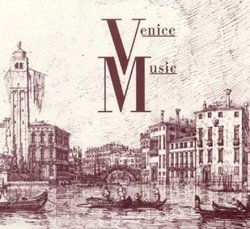| All Artists: Claudio Monteverdi, Adrian Willaert, Orlande de Lassus, Giovanni Gabrieli, Antonio Vivaldi, Cipriano de Rore, Heinrich Schutz, Andrea Gabrieli, Jurgen Jurgens, Nikolaus Harnoncourt, Jaap Schroder, Concentus Musicus Wien, Wiener Blockflötenensemble, Alsfelder Vokalensemble, Capella Antiqua München, Concerto Amsterdam, Gustav Leonhardt Title: Venice Music Members Wishing: 0 Total Copies: 0 Label: Celestial Harmonies Release Date: 4/21/1995 Genres: International Music, Special Interest, Pop, Classical Styles: Vocal Pop, Opera & Classical Vocal, Chamber Music, Forms & Genres, Concertos, Historical Periods, Baroque (c.1600-1750), Instruments, Reeds & Winds, Strings Number of Discs: 1 SwapaCD Credits: 1 UPC: 013711309522 |
Search - Claudio Monteverdi, Adrian Willaert, Orlande de Lassus :: Venice Music
 | Claudio Monteverdi, Adrian Willaert, Orlande de Lassus Venice Music Genres: International Music, Special Interest, Pop, Classical
It is amazing to think of music being made in stereo in the 16th century, but that is what was happening in Venice. The dramatic acoustics of St. Mark's Cathedral, one of the architectural wonders of Venice, gave Veneti... more » |
Larger Image |

 Track Listings (23) - Disc #1
Track Listings (23) - Disc #1